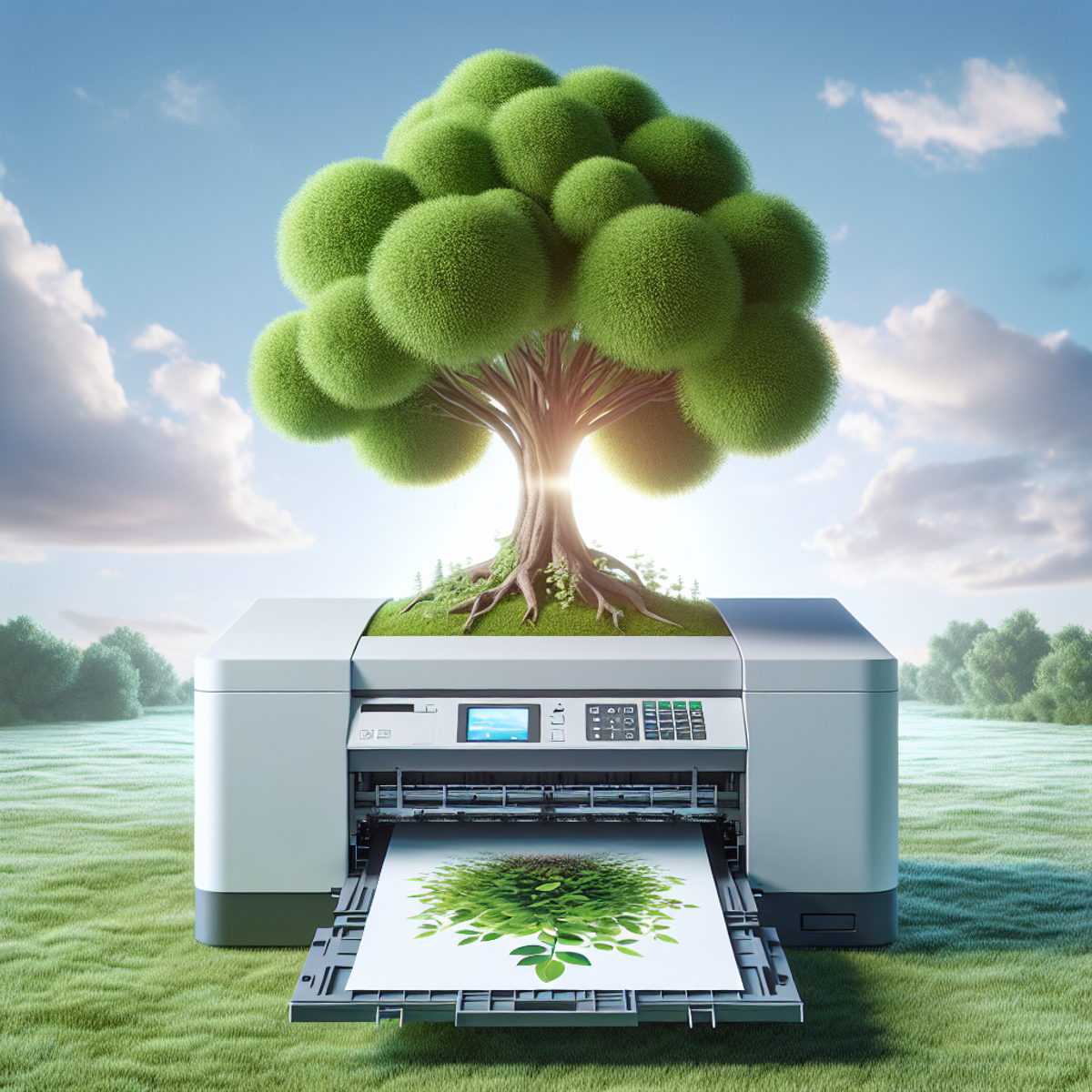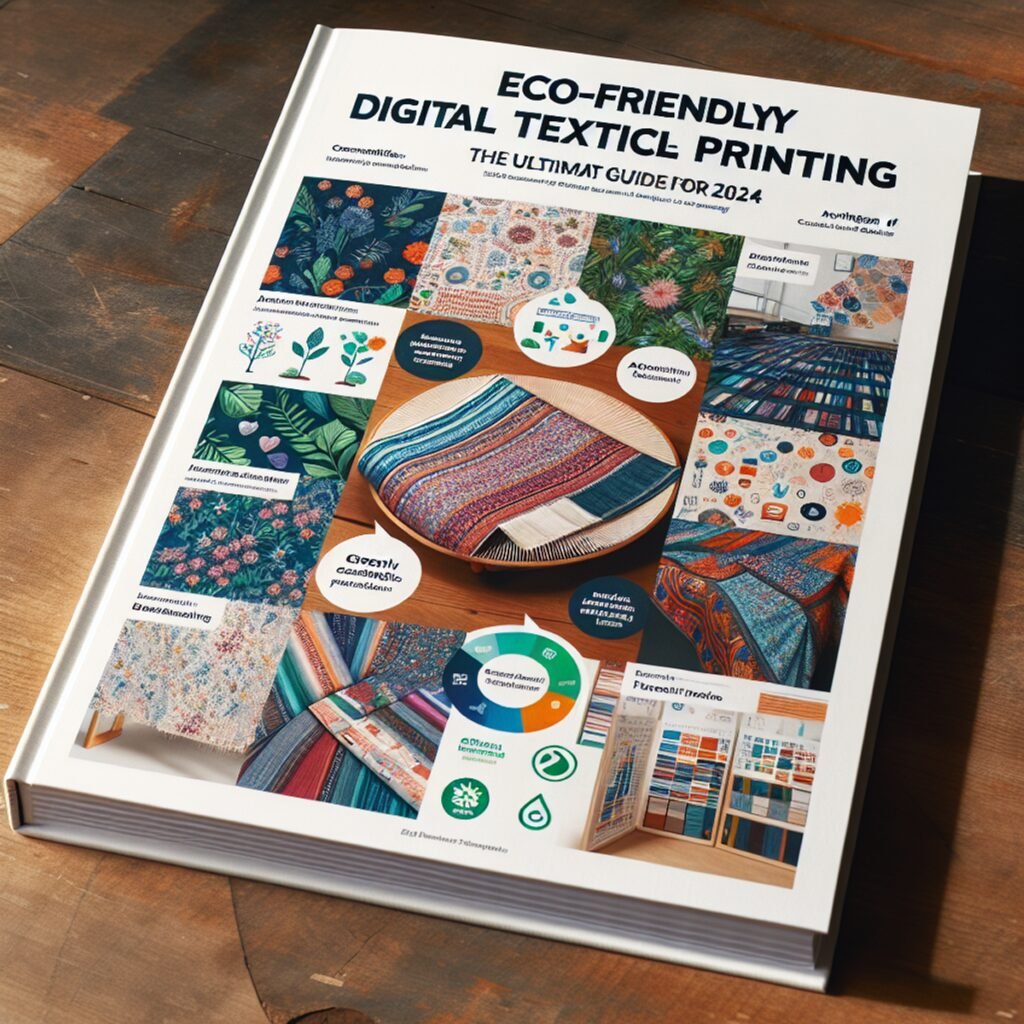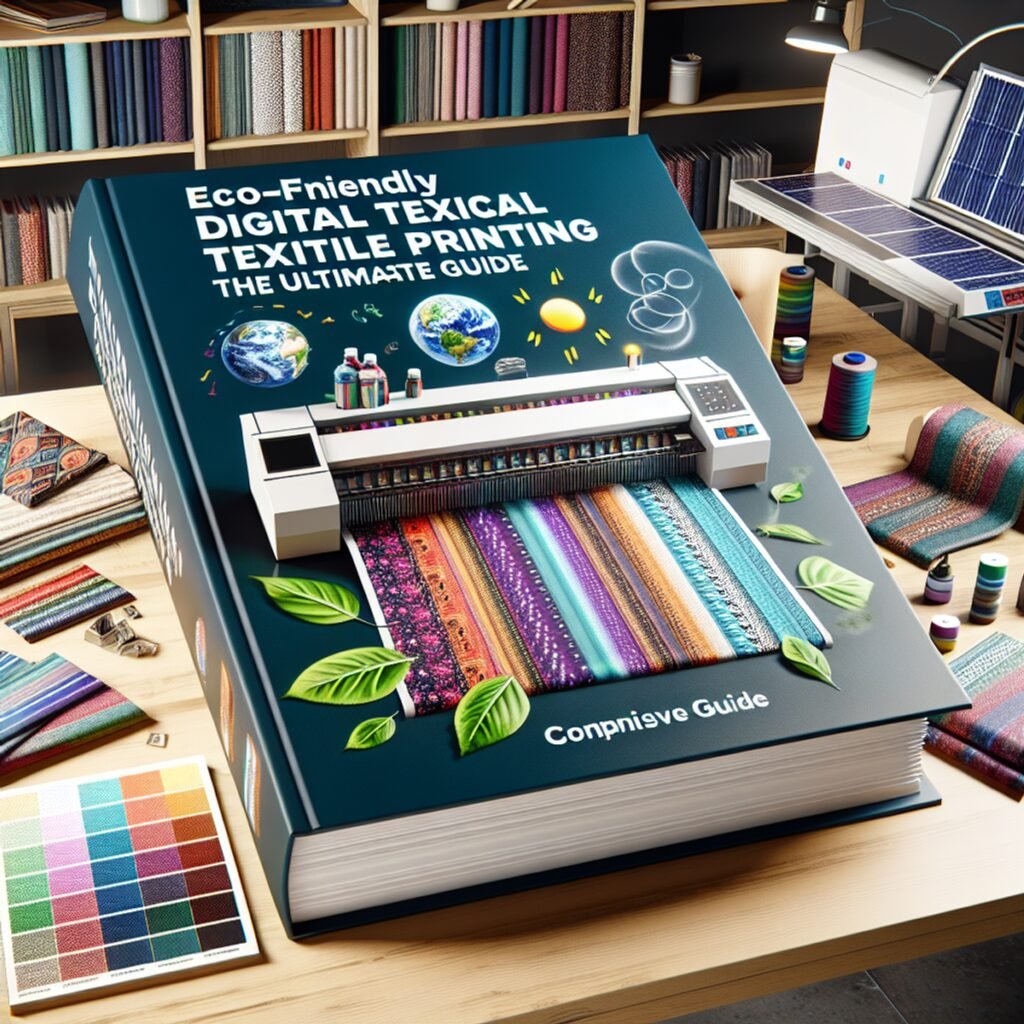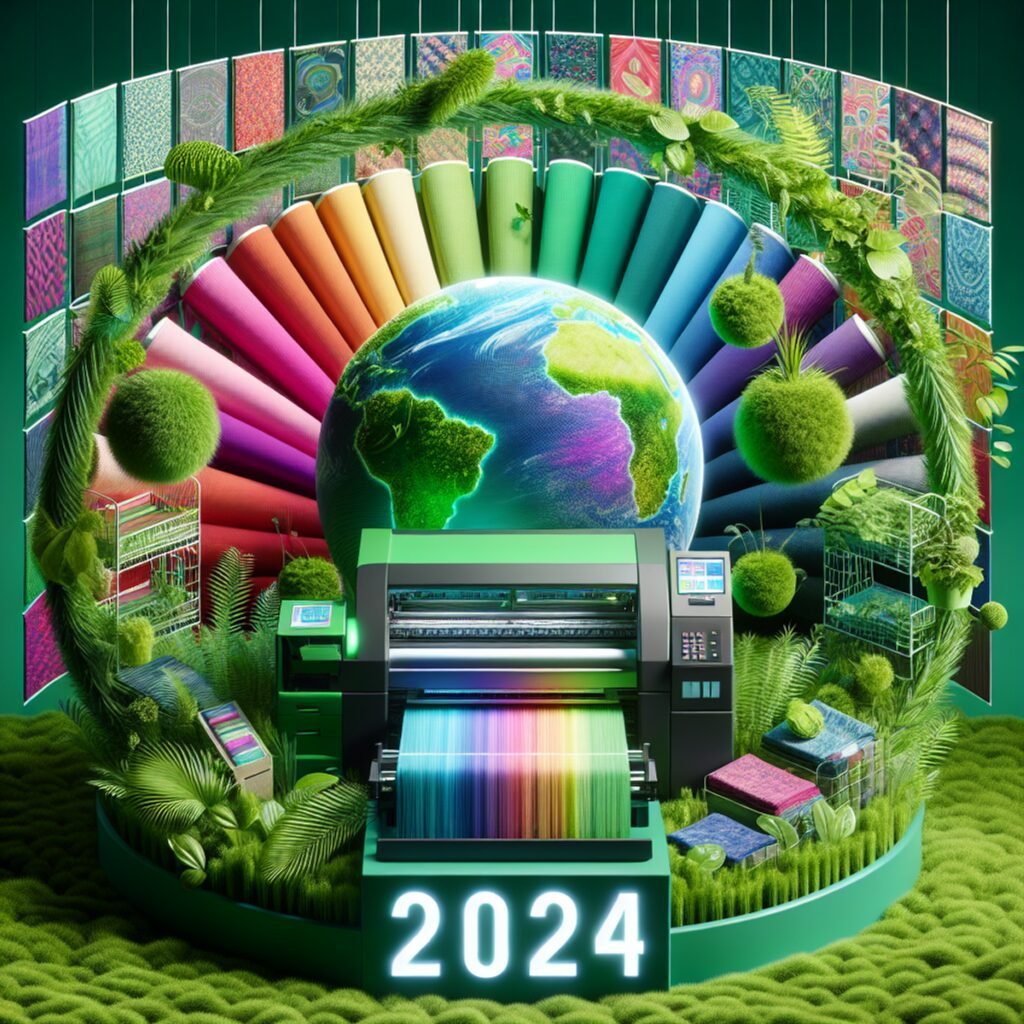
Introduction
Eco-Friendly Digital Textile Printing has emerged as a sustainable solution in the fabric printing industry. With its reduced environmental impact and innovative inkjet technology, it has gained significant relevance in the current market.
The fashion industry is increasingly recognizing the importance of sustainability, and digital textile printing plays a vital role in driving this change. By minimizing the use of water and energy, digital printing significantly reduces its environmental footprint compared to traditional printing methods. Additionally, it eliminates the need for toxic chemicals, making it a safer and healthier option for both workers and consumers.
In this comprehensive guide, we will explore the advantages of embracing eco-friendly digital textile printing and provide practical insights on how to implement sustainable practices in your printing process.
This guide aims to equip you with the knowledge and tools necessary to adopt eco-friendly practices in your digital textile printing operations. We will delve into:
- Key considerations for a greener workflow
- Ink alternatives that enhance sustainability
- The role of technology and innovation in driving eco-friendliness
- A real-life case study of a company that has successfully embraced sustainable digital printing
By the end of this guide, you will have a comprehensive understanding of eco-friendly digital textile printing and be ready to make a positive impact through your own printing business or collaborations. Let’s dive into the world of sustainable fabric printing and discover how you can contribute to a greener future.
The Advantages of Embracing Eco-Friendly Digital Textile Printing

Embracing eco-friendly digital textile printing offers numerous advantages for manufacturers and the material industry. By adopting sustainable practices, companies can contribute to reducing their environmental impact and conserving valuable resources. Here are some key benefits of eco-friendly digital textile printing:
- Reduced Environmental Impact: Traditional textile printing methods often involve excessive water usage, energy consumption, and the release of harmful chemicals into the environment. In contrast, eco-friendly digital textile printing minimizes water and energy consumption, leading to a significant reduction in carbon emissions and overall environmental footprint.
- Conservation of Resources: Eco-friendly digital textile printing allows for on-demand production, enabling manufacturers to print only what is necessary. This approach reduces material waste by eliminating the need for large production runs that may result in excessive unsold inventory. Additionally, digital printing enables customization options, providing customers with unique and personalized products while minimizing resource consumption.
- Minimization of Textile Waste: The fashion industry is notorious for generating significant amounts of textile waste. However, eco-friendly digital textile printing offers a solution by allowing manufacturers to produce fabrics in precise quantities based on demand. This eliminates the need for overproduction and reduces the amount of textile waste that ends up in landfills.
By embracing eco-friendly digital textile printing, manufacturers can not only reduce their environmental impact but also meet the growing consumer demand for environmentally friendly materials. This shift towards sustainability aligns with the global movement towards a circular economy where resources are conserved and waste is minimized.
Implementing Sustainable Approaches in the Digital Textile Printing Process

The fashion industry plays a crucial role in driving sustainability through its choice of printing techniques and materials. By embracing eco-friendly digital textile printing, fashion brands and interior design companies can make a significant impact on reducing their environmental footprint. Here are some key considerations for implementing sustainable approaches in the digital textile printing process:
1. Choice of Printing Techniques
Digital textile printing offers several sustainable practices that can be adopted by fashion brands and interior design companies. One such practice is the use of pigment ink for vibrant and long-lasting prints. Pigment inks contain tiny particles that sit on top of the fabric, resulting in rich colors without compromising the fabric’s breathability. Unlike traditional dye-based inks, pigment inks do not require extensive washing or chemical treatments, making them a more environmentally friendly option.
2. Sustainable Production
In addition to choosing the right printing techniques, fashion brands can also focus on sustainable production methods. This includes using organic or sustainably sourced fabrics that have a lower impact on the environment. By opting for fabrics made from natural fibers like organic cotton or hemp, brands can reduce their reliance on synthetic materials that contribute to pollution and waste.
3. Collaboration with Eco-Conscious Suppliers
Fashion brands can collaborate with suppliers who share their commitment to sustainability. This involves selecting suppliers who prioritize eco-friendly practices throughout their manufacturing processes and supply chain. By working together, brands and suppliers can ensure that sustainable practices are implemented at every stage of production, from sourcing materials to printing and finishing.
4. Educating Consumers
Another important aspect of implementing sustainable approaches in digital textile printing is educating consumers about the benefits of eco-friendly choices. By highlighting the use of pigment ink and sustainably sourced fabrics, brands can raise awareness among consumers about the positive impact they can make through their purchasing decisions.
By adopting these sustainable approaches, fashion brands and interior design companies can contribute to a greener future for the digital textile printing industry. The use of pigment ink and sustainable production methods not only reduces environmental impact but also creates opportunities for innovation and creativity in the design process.
For a more detailed analysis on the subject, you can refer to this research paper on sustainable practices in the textile industry.
Key Considerations for a Greener Workflow

When it comes to embracing eco-friendly digital textile printing, choosing the right fabric is a crucial consideration. Opting for eco-friendly fabric options can significantly reduce the environmental impact of the printing process. By selecting fabrics made from sustainable materials such as organic cotton, hemp, or bamboo, you can ensure that your digital printing practices align with environmentally conscious principles.
Additionally, sample books play a vital role in promoting eco-friendly workflows. They serve as valuable resources for both printers and eco-conscious consumers, allowing them to explore and select fabrics that meet their sustainability criteria. These sample books showcase a range of eco-friendly fabric options, enabling informed decisions that prioritize environmental responsibility without compromising on quality or design.
By guiding readers on the selection of eco-friendly fabrics and highlighting the availability of sample books as a valuable resource, businesses can take proactive steps towards establishing greener workflows in digital textile printing. This emphasis on sustainability in fabric selection not only contributes to environmental conservation but also resonates with the growing demand for eco-conscious products in the textile industry.
Exploring Ink Alternatives for Enhanced Sustainability

In today’s world, where environmental consciousness is on the rise, finding sustainable solutions for various industries has become crucial. One such industry that has been actively seeking eco-friendly alternatives is digital textile printing.
Digital textile printing offers numerous advantages over traditional methods, including reduced water consumption, minimal wastage of materials, and faster production times. However, one area where it still falls short is in the use of inks that contain harmful chemicals.
Understanding the Importance of Chemical-Free Inks
Chemical-based inks used in digital textile printing often contain substances such as volatile organic compounds (VOCs) and heavy metals. These chemicals can have detrimental effects on both human health and the environment.
For instance, VOCs are known to contribute to air pollution and can cause respiratory issues when inhaled. Similarly, heavy metals like lead and cadmium can contaminate water sources and harm aquatic life.
To address these concerns and move towards a more sustainable future, it is essential to explore alternative options that are free from such harmful substances.
Exploring Different Types of Chemical-Free Inks
1. Water-Based Inks
Water-based inks are considered one of the most environmentally friendly options available. They are made using natural pigments or dyes dispersed in water, eliminating the need for harmful solvents.
Benefits of water-based inks include:
- Low VOC emissions
- Non-toxic formulation
- Easy cleanup with water
- Suitable for a wide range of fabrics
However, they may have limitations in terms of color vibrancy and durability compared to their chemical counterparts.
2. Pigment Inks
Pigment inks utilize tiny solid particles that adhere to fabric fibers during the printing process. They offer excellent color fastness and can be used on various types of fabrics without the need for additional treatments.
Advantages of pigment inks include:
- High color intensity
- Resistance to fading and washing
- Compatibility with natural and synthetic fibers
On the downside, pigment inks may require pre- or post-treatments to ensure proper fixation and can be less suitable for intricate designs or lightweight fabrics.
3. Reactive Inks
Reactive inks are specifically designed for printing on natural fibers such as cotton, linen, and silk. They work by forming a chemical bond between the ink and the fabric through a process called dye fixation.
Key features of reactive inks are:
- Excellent color brightness
- Good wash fastness
- Breathable and comfortable feel on fabrics
However, their use is limited to natural fibers only, making them unsuitable for synthetic or blended materials.
4. Disperse Inks
Disperse inks are primarily used for printing on polyester and other synthetic fibers. They contain dyes that are finely dispersed in a liquid solvent, allowing them to penetrate the fabric surface and create vibrant prints.
Benefits of disperse inks include:
- High color yield
- Resistance to fading and bleeding
- Ability to achieve complex patterns
It’s worth noting that some disperse inks may still contain trace amounts of solvents, so it’s essential to choose ones that are certified as eco-friendly.
Making Informed Choices for Eco-Friendly Printing
While each type of chemical-free ink has its own set of advantages and limitations, the key takeaway is that there are viable alternatives available for reducing the environmental impact of digital textile printing.
By understanding the characteristics of different inks and matching them with specific requirements, manufacturers, designers, and print service providers can make informed choices towards more sustainable practices.
It is crucial for all stakeholders in the industry to collaborate and drive the adoption of these eco-friendly solutions. Only then can we pave the way for a truly sustainable future in digital textile printing.
Incorporating Technology and Innovation for a Greener Print Industry

Technological advancements are essential for making the digital fabric printing industry more environmentally friendly. Compared to traditional screen printing techniques, digital printing offers significant environmental advantages, particularly in terms of water and energy consumption. Here’s how technology and innovation are making the print industry greener:
1. Reduced Water Consumption
Digital textile printing uses much less water than screen printing. Screen printing requires large amounts of water for fabric preparation and cleaning processes, but digital printing eliminates the need for extensive water usage, resulting in significant water conservation.
2. Energy Efficiency
Digital fabric printing uses computerized systems that are more energy-efficient than conventional screen printing setups. These systems optimize the printing process, reducing energy consumption and minimizing the carbon footprint.
3. Vegetable-Based Ink
Another innovative approach to eco-friendly digital textile printing is the use of vegetable-based ink. Unlike traditional petroleum-based inks, vegetable-based inks are made from renewable resources like soybeans or linseed oil. They have fewer harmful chemicals and emit lower levels of volatile organic compounds (VOCs), making them a greener alternative.
Vegetable-based ink offers several benefits for eco-friendly printing practices:
- Reduced Environmental Impact: Vegetable-based ink production generates lower carbon emissions and contributes to cleaner air quality due to reduced VOC emissions.
- Biodegradability: These inks are easily biodegradable, ensuring minimal environmental impact during disposal.
- Vibrant Colors: Vegetable-based inks produce vibrant and rich colors, providing excellent print quality while maintaining their eco-friendly properties.
By using technology like digital printing systems and opting for vegetable-based inks, the print industry can significantly reduce its environmental footprint and work towards a more sustainable future.
Case Study: Equipe Athletics’ Journey Towards Sustainable Digital Printing
Equipe Athletics provides a compelling case study of successful adoption of eco-friendly practices in digital textile printing. The company has demonstrated a strong commitment to sustainability, particularly in their digital printing operations. One of the key initiatives that sets Equipe Athletics apart is their innovative use of water-based ink.
By embracing water-based ink, Equipe Athletics has not only contributed to environmental sustainability but has also seen improvements in the quality of their prints. This forward-thinking approach aligns with the growing demand for sustainable and high-quality fabric printing services.
The research study conducted at Equipe Athletics showcases the viability and benefits of implementing water-based ink in digital textile printing. Their journey serves as an inspiring example for other businesses looking to integrate eco-friendly practices into their printing processes.
Equipe Athletics’ success story emphasizes the potential for companies to achieve both environmental and operational gains through sustainable initiatives, such as the adoption of water-based ink in digital textile printing. This case study underscores the importance of continuous innovation and a proactive approach in driving positive change within the industry.
The Future of Eco-Friendly Digital Textile Printing
As the textile industry continues to prioritize sustainability, the future of eco-friendly digital textile printing looks promising. Advancements in technology and the emergence of alternative methods are paving the way for even greener and more efficient printing processes. Here are some key trends and developments to watch out for:
1. Thermal Transfer Technology
Thermal transfer printing sheets are gaining popularity as a sustainable alternative in digital textile printing. This method involves transferring designs from a heat transfer paper onto fabric using heat and pressure. It offers several benefits, including:
- Reduced ink consumption: Thermal transfer technology allows for precise ink transfer, minimizing waste and reducing environmental impact.
- Enhanced color vibrancy: The heat transfer process ensures vibrant and long-lasting prints, even on natural fabrics.
- Versatility: This method can be used on various types of fabrics, making it suitable for a wide range of applications.
2. Natural Fabrics
The use of natural fabrics in digital textile printing is on the rise due to their eco-friendly properties. Fabrics such as organic cotton, linen, hemp, and bamboo are being embraced for their sustainability credentials. Natural fabrics offer several advantages:
- Reduced environmental impact: Natural fabrics require fewer resources and chemicals during production compared to synthetic materials.
- Biodegradability: When disposed of, natural fabrics break down more easily, contributing to a circular economy.
- Breathability and comfort: Natural fibers provide better breathability and comfort compared to synthetic alternatives.
3. Sublimation Printing Process
Sublimation printing, another eco-friendly method that is gaining traction in the industry, is revolutionizing digital textile printing. This process involves using water-based inks that transform into gas when heated and then bond with polyester fibers. Sublimation printing offers several sustainability benefits:
- Water conservation: Unlike traditional dyeing methods, sublimation printing requires minimal water usage.
- Energy efficiency: The process uses less energy compared to other printing techniques, reducing carbon emissions.
- Customization and waste reduction: Sublimation printing allows for precise color placement, minimizing the need for excess dye and reducing material waste.
As the demand for sustainable textile printing grows, it is crucial for businesses to stay informed about these emerging trends and alternative methods. By embracing thermal transfer technology, utilizing natural fabrics, and exploring sublimation printing processes, companies can contribute to a more sustainable and efficient print industry.
The future of eco-friendly digital textile printing is bright, offering endless possibilities for creating beautiful and environmentally conscious designs. By adopting these innovative practices, businesses can align with consumer preferences while reducing their ecological footprint.
Balancing Environmental Concerns with Cost Considerations
For businesses looking to find a balance between sustainability and profitability, it’s important to understand the potential costs involved in implementing eco-friendly digital printing methods. While these methods offer many environmental advantages, it’s crucial to weigh them against the expenses to ensure they make financial sense. Here are some ways businesses can achieve this balance:
- Cost assessment: Conduct a thorough evaluation of the overall expenses associated with digital printing on fabric, including ink costs, energy usage, and equipment investments.
- ROI analysis: Calculate the return on investment for incorporating eco-friendly practices into digital textile printing. Look at the long-term savings and possible revenue growth from sustainability efforts.
- Efficiency optimization: Seek out ways to streamline production processes and reduce waste, which can lead to cost savings while also supporting eco-friendly goals.
- Strategic partnerships: Work together with suppliers and technology providers to find affordable yet sustainable options in digital textile printing that benefit both parties.
By carefully considering both environmental concerns and cost factors, businesses can confidently adopt eco-friendly digital textile printing methods without jeopardizing their financial stability. This strategic approach allows companies to make a positive impact on the environment while staying competitive in the industry.
Conclusion
Embracing eco-friendly practices in the digital textile printing industry is crucial for a sustainable future. By adopting these practices, businesses can not only reduce their environmental impact but also contribute to the conservation of resources in the textile industry.
To make a positive impact through their own printing businesses or collaborations, readers are encouraged to implement the strategies and techniques discussed in this article:
- Choose eco-friendly materials, such as sustainable fibers and natural fabrics.
- Utilize technologies like digital printing with pigment or water-based inks.
- Minimize waste and reduce water and energy consumption.
By prioritizing sustainability alongside profitability, businesses can find a balance that benefits both the environment and their bottom line. The digital fabric printing industry has the potential to lead the way in eco-friendly technology, paving the path for a more sustainable future in the textile industry as a whole.
Let’s work together to create a greener and more sustainable textile industry through eco-friendly digital textile printing.
FAQs (Frequently Asked Questions)
What is Eco-Friendly Digital Textile Printing?
Eco-Friendly Digital Textile Printing refers to the use of sustainable and environmentally friendly practices in the digital printing of fabrics. It involves the use of inkjet technology and eco-friendly materials to reduce environmental impact and promote conservation of resources.
What are the advantages of embracing Eco-Friendly Digital Textile Printing?
Embracing Eco-Friendly Digital Textile Printing offers various benefits such as reduced environmental impact, conservation of resources, and minimization of textile waste through on-demand production and customization options. It also promotes the use of environmentally friendly materials in the textile industry.
How can sustainable approaches be implemented in the digital textile printing process?
Sustainable approaches in the digital textile printing process can be implemented by fashion brands and designers through their choice of printing techniques and materials. This includes using pigment ink for vibrant and long-lasting prints, as well as promoting sustainable production practices.
What are the key considerations for a greener workflow in digital textile printing?
Key considerations for a greener workflow in digital textile printing include choosing the right fabric with an emphasis on eco-friendly options, as well as utilizing sample books as a helpful resource for both printers and eco-conscious consumers.
Why is it important to explore ink alternatives for enhanced sustainability?
Exploring ink alternatives is important for achieving enhanced sustainability in digital textile printing. Chemical-free inks play a crucial role in driving a sustainable future for the industry, and understanding different types of chemical-free inks available in the market is essential for eco-friendly printing practices.
How can technology and innovation contribute to a greener print industry?
Technology and innovation contribute to a greener print industry by driving eco-friendliness through advancements in digital fabric printing. By comparing environmental impacts of different printing techniques and promoting the use of vegetable-based ink, technological advancements can lead to more sustainable practices.






